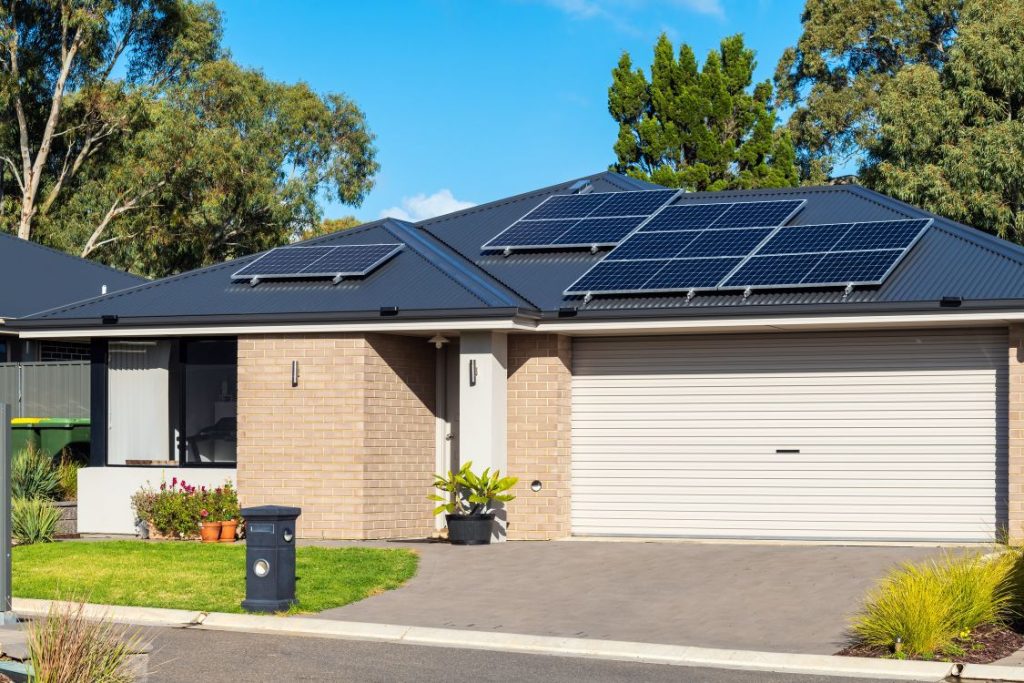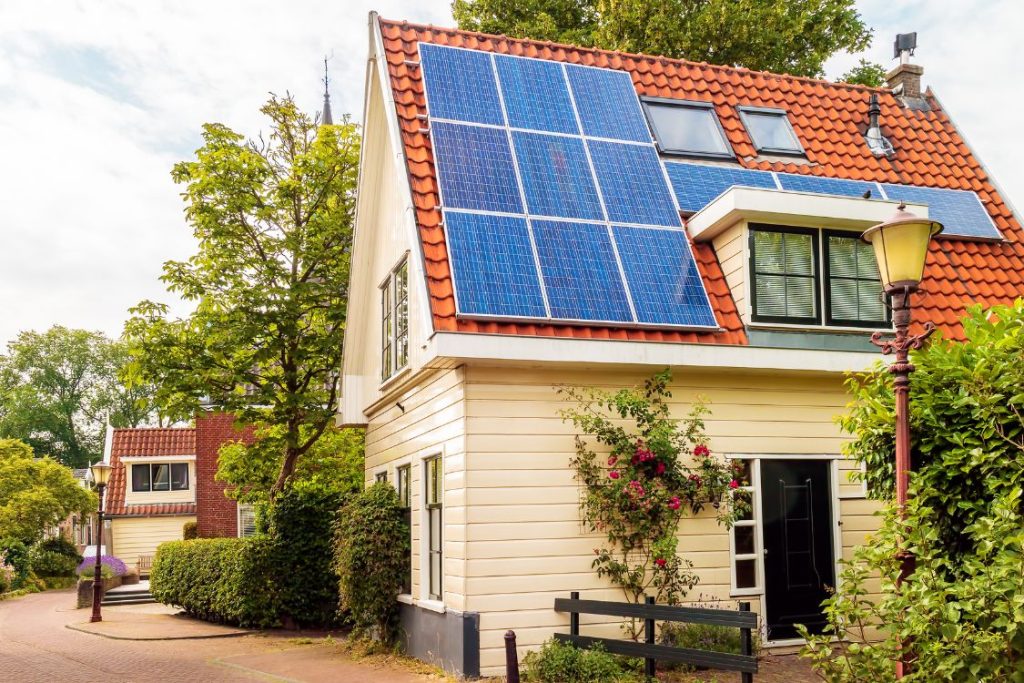Solar Panels: Transforming Energy for a Brighter Future

Is it possible to power a home, reduce bills, and combat climate change simultaneously? Solar panels, transforming sunlight into electricity, might just be the solution we’re looking for. With over 1.39 million installations across the UK, solar panels are not just an environmental boost; they are revolutionising how we harness energy. This article delves into the details, from understanding the types of solar panels available to the intricacies of installation, costs, and potential savings. So, how exactly are solar panels shaping a brighter future? Let’s explore their impact and potential.
Understanding Solar Panels and Their Types
Solar panels, commonly referred to as photovoltaic (PV) panels, are devices that convert sunlight into electricity. They function by allowing photons from sunlight to knock electrons free from atoms, generating a flow of electricity. This process occurs through the use of semiconductor materials, typically silicon, which are organised into cells that form a panel. Over 1.39 million homes in the UK have adopted this technology to harness solar energy efficiently, contributing to both energy savings and environmental sustainability.
There are several types of solar panels available in the market, each with unique characteristics. Monocrystalline panels are made from a single, pure crystal structure, allowing them to achieve high efficiency and durability. Polycrystalline panels consist of many silicon fragments melted together, which makes them less efficient but more cost-effective. Thin-film panels are constructed by placing one or more layers of photovoltaic material on a substrate, offering flexibility and lightweight properties, albeit at lower efficiency levels.
- Monocrystalline Panels: Efficiency > 20%, used for limited space installations.
- Polycrystalline Panels: Efficiency 15-17%, suited for larger spaces.
- Thin-film Panels: Efficiency 10-12%, ideal for non-traditional surfaces.
- Domestic Panels in UK: Efficiency 15-24%, common in residential settings.
- High-Efficiency Panels: Exceeding 22%, often used in high-demand scenarios.
The Solar Panel Installation Process
The solar panel installation process begins with a series of pre-installation steps that are crucial for ensuring a successful setup. Initially, a site evaluation is conducted to assess the suitability of the location. This includes checking the roof’s structural integrity, orientation, and shading, as well as calculating the potential energy output. Following this, a design plan is developed, outlining the optimal layout and configuration of the solar panels in Scotland. This stage can take several weeks, as it involves technical assessments and obtaining necessary permits.
Once the preparatory work is complete, the actual installation can commence, often taking as little as one day. The process begins with the mounting of the panels, which involves securely attaching them to the roof using a racking system. After that, the electrical setup is performed, where the panels are wired to an inverter that converts the generated direct current (DC) into alternating current (AC) for household use. Finally, a connection is made to the home’s electrical system, often requiring some modifications to accommodate the new energy source.
Selecting certified solar panel installers is a critical aspect of the installation process. Certified professionals ensure compliance with safety standards and guarantee the quality of the work. It is advisable to obtain multiple quotes to compare costs and services, allowing homeowners to make informed decisions. Thorough research and reference checks can help identify reputable installers who offer reliable warranties and aftercare services.
| Step | Description |
| Site Evaluation | Assess roof structure, orientation, and shading to determine installation feasibility. |
| Design Planning | Develop a layout and configuration plan, including energy output estimates. |
| Panel Mounting | Install panels using a racking system and ensure secure attachment to the roof. |
| Electrical Setup | Wire panels to inverter and connect to the home’s electrical system. |
By following these steps, homeowners can achieve an efficient solar panel installation that maximises energy production and promotes long-term savings.
Costs and Financial Aspects of Solar Panels

The cost of installing solar panels in the UK varies based on several factors, including the system size, materials, and installation complexity. For an average 4kW solar panel system, homeowners can expect to pay between £5,000 and £6,000. This cost is broken down into material expenses, which account for approximately 40-50% of the total, with an average of £3,150 for a three-bedroom home. Labour costs, including the installation process, represent about 10-30% of the total price. Business costs, covering regulatory approvals and scaffolding, make up the remaining 30-40% of the expenses. These figures illustrate the importance of understanding the comprehensive cost structure when planning a solar panel installation.
Financial assistance is available to help offset the initial investment required for solar panels. Various grants and incentives are offered, often subject to eligibility criteria based on income or benefits. These financial support mechanisms aim to make solar energy accessible to a broader audience, promoting sustainable energy adoption. Programs such as the Smart Export Guarantee (SEG) allow homeowners to earn money by exporting unused electricity back to the grid, providing an additional source of income and enhancing the financial viability of solar panel installations.
The potential savings from solar panels can be substantial, with homeowners saving up to £660 annually on electricity bills. The break-even point, where the savings outweigh the initial investment, typically occurs within 8 to 10 years. This period can vary depending on the household’s energy usage and location. Over the lifespan of the panels, which is usually around 25 years, the cumulative savings can significantly exceed the initial costs, offering both economic and environmental benefits.
Financial Assistance Options
In the UK, several financial assistance options are available for solar panel installations. The Smart Export Guarantee (SEG) is a prominent scheme, enabling homeowners to earn money by supplying surplus electricity to the grid. Additionally, government grants and subsidies can reduce upfront costs, although eligibility often depends on specific income levels or benefits. Subscription models, where homeowners pay a monthly fee that covers installation and maintenance, are also gaining popularity. These options provide flexible financial pathways to facilitate the adoption of solar energy, ensuring it is a viable choice for a wider range of households.
Environmental and Economic Benefits of Solar Panels
How do solar panels contribute to reducing carbon emissions? Solar panels significantly lower carbon emissions by harnessing renewable energy from the sun, thereby reducing reliance on fossil fuels. This clean energy source is pivotal in combating climate change, as it does not produce greenhouse gases during electricity generation. By transforming sunlight into electricity, solar panels help decrease the carbon footprint of households and businesses alike. In the UK, installing solar panels can reduce carbon emissions by approximately 1 tonne per year. This contribution is essential for promoting sustainable practices and supporting global environmental goals.
What are the economic benefits of solar panels? Homeowners benefit economically through energy savings and increased property value. Solar panels can save homeowners around £660 annually on electricity bills, providing long-term financial relief. The break-even point for the initial investment typically occurs within 8 to 10 years, after which the savings continue to accumulate. Additionally, solar panels can increase the value of a home by at least £2,000, enhancing its market appeal. These economic incentives, combined with environmental advantages, make solar panels a compelling choice for those looking to invest in sustainable energy solutions.
- Cost savings on electricity bills
- Reduction in carbon emissions
- Promotion of renewable energy
- Increase in property value
- Contribution to sustainable energy practices
- Long-term financial benefits through energy independence
Maintenance and Lifespan of Solar Panels
The typical lifespan of solar panels is around 25 years, although newer models have the potential to last up to 40 years. What factors affect the lifespan of solar panels? Precision in this context is high as weather conditions, installation quality, and material durability are primary influencers. Solar panels are designed to withstand various environmental conditions, but factors such as poor installation or substandard materials can lead to a reduced lifespan.
In terms of maintenance, solar panels are generally low maintenance. How often do solar panels need to be cleaned? High precision indicates that panels should be cleaned at least once or twice a year, depending on their location and surroundings. UK rainfall often suffices in keeping the panels clean, but additional cleaning may be required if panels are situated near trees or in areas with high pollution levels. Occasional repairs might be necessary if damage occurs, often due to extreme weather events.
Regular maintenance is crucial for ensuring the efficiency and longevity of solar panels. Why is regular maintenance important? Precision here points to the prevention of efficiency loss and the extension of the panel’s lifespan. Dust, debris, and potential shading issues can lead to reduced energy output if not addressed promptly. Regular inspections and maintenance ensure the panels operate at optimal efficiency, delivering consistent energy savings and maximising their operational lifespan.
Solar Panels: A Look at Future Trends and Innovations

Recent advancements in solar panel technology have led to increased efficiency and significantly reduced costs, making solar energy more accessible and appealing. Precision in this context is high, with solar panel costs decreasing by 80% over the last decade. These advancements include the development of higher-efficiency panels that convert more sunlight into electricity, reducing the number of panels needed for the same energy output. Innovations in materials and design have also contributed to enhanced durability and performance, offering more robust solutions that can withstand diverse environmental conditions.
Emerging trends in the solar energy sector focus on the integration of battery storage systems and the creation of new solar products. Precision here is high, highlighting that as battery prices continue to drop, the feasibility of solar plus battery setups increases. This advancement allows for the storage of excess solar energy, enabling users to access power during non-sunlight hours, thus promoting energy independence. Additionally, new products such as solar tiles and transparent solar panels are being developed, providing versatile applications for solar technology in residential and commercial buildings. These innovations signal a transformative period for solar energy, paving the way for a more sustainable energy future.
Final Words
Solar panels offer a compelling mix of environmental benefits and economic incentives.
From the basics of photovoltaic panels and installation processes to financial aspects and future innovations, the decision to invest in solar technology is underscored by both immediate and long-term advantages.
With decreasing costs and increasing efficiency, the accessibility and appeal of solar energy continue to grow.
Homeowners embracing this renewable energy source can anticipate significant savings on energy bills and a boost in property value, all while contributing positively to the environment.
The future looks bright for solar panels, thanks to ongoing advancements and supportive financial frameworks.

Emily Fraser is an experienced technology journalist who specializes in breaking tech news, product launches, and digital solutions. She aims to deliver engaging, well-researched content that simplifies complex topics and keeps readers informed about the ever-evolving tech landscape.

